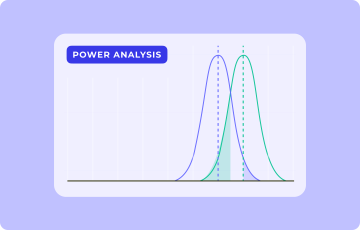
Analytics and A/B testing in a post-cookie world
On Nov. 18, Conversion Jam held the second of four online sessions with experts in growth experimentation, A/B testing, entitled Analytics and experimentation in a post-cookie world. It’s no secret that 3rd-party cookies have made customer acquisition costs incredibly low for the last decade—and most brands take this for granted, using customer acquisition to fuel their growth. The death of the 3rd-party cookie will actually create new opportunities for optimizers to improve customer experiences, but those who focus on acquisition over retention are in for a rude awakening.
The session featured:
- Dana DiTomaso, President & Partner, Kickpoint Inc.
- Collin Tate Crowell, Senior Director, Marketing & Partnerships, Kameleoon

Start using GA4
Understand how conversion modeling changes tracking. You’ve already been losing data from ad-blockers, intelligent tracking prevention, and GDPR. In Google Universal, you could not track these people properly. Conversion modeling uses machine learning to quantify the impact of marketing efforts when a subset of conversions can’t be observed. “This method of conversion modeling really helps you look at a more comprehensive evaluating of what’s truly happening on your site or app,” said Dana.
Get data into GA4 immediately. “I think the end game is that Google is eventually going to force us all to use GA4,” Dana said. “You can’t move data from Universal to GA4, so you have to start getting new data in.”
Double-tag GA Universal and GA4. There is no negative impact on speed or SEO. You do need to use Google Tag Manager. “Technically you can use GA4 on your site without Tag Manager, but it’s not recommended by Google.” GA4 probably won’t become your main analytics tool yet, and still slacks some integrations, e.g. Google Optimize, Callrail, Segment.
Track more events, track better events. In Universal, you are limited by 3 event options: category, action, label. In GA4 you have parameters, which you can use for basically anything. Up to 25 parameters per event. “This is a huge opening in our ability to capture stuff. Take advantage of it, and capture different things.”
Use user properties. User properties are like events, but for users. If the user did something you want to remember—e.g. They initially came in from a certain experiment—you tag them with a user property. Remarket them in a segment later, compare it to their subscription level (if you’re working with a SaaS business.) you can also set personas as user properties.
Build audiences. Previously in universal, you could set audiences based on conditions. Now you can set audiences based on complex sets of conditions.
Examples include:
- Users who purchased immediately after signing up for your newsletter
- Users who purchased things over 2 visits in 30 days, and came from Facebook
- Users who converted within a week of viewing a blog or post or features page, and watched at least 50% of a specific video
Refocus on using 1st party cookies
Focus on the value of retention. The loss of the third-party cookie is going to make it harder and more expensive to acquire customers. Brands are going to have to look more closely at the value of retention. This is an opportunity for optimizers, not a loss.
Create a data governance strategy. 7 out of 10 brands don’t have a data and analytics strategy, according to Forrester research. “This isn’t really about 3rd party cookies, or the death of them,” said Collin Crowell. “This is really about a fundamental, deep-rooted problem with how brands appreciate and understand how to use data analytics.”
Start by using anonymous data for CX optimization. “We don’t need to jump up to profile-based targeting, worrying about PII, and all of these sophisticated CRM connections.” You can use completely anonymous data to do enough frontend CX optimization to come out ahead of your competitors. “Crawl, walk, run.” Said Collin.
This is the 2nd of 4 articles covering Conversion Jam 2021, the largest conversion and growth event in the Nordics.



